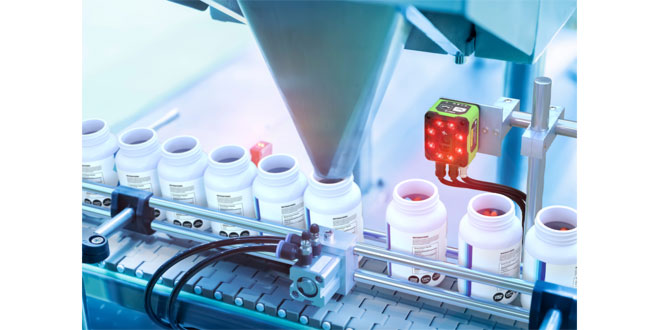
 By Daniel Dombach, Director of Industry Solutions, EMEA, Zebra Technologies
By Daniel Dombach, Director of Industry Solutions, EMEA, Zebra TechnologiesDid you know that eight in 10 patients now expect drug manufacturers to disclose how medications are manufactured, handled, transported and stored?
Not distributors, delivery companies or doctors – drug manufacturers. Moreover, 80% of patients say it’s important for manufacturers to verify the sources of medication ingredients, including the country of origin and local standards for the medication itself. These expectations stem from distrust of the pharmaceutical supply chain, including those who manufacture, distribute, prescribe and dispense drugs, as revealed in Zebra’s Pharmaceutical Vision Study report, which was published in late 2021.
To me, this patient feedback serves as a call to action to pharma manufacturers to more critically assess how technology decisions are being made and how all technologies are – or are not – being used in factories, warehouses, and other supply chain facilities today, starting with machine vision systems.
Whatever happens at the point of production impacts all supply chain stakeholders, to include distributors, healthcare providers and patients. The fact that four in 10 patients fear pharmaceutical supply chain issues pose a risk of illness or death is a big red flag that first-mile entities aren’t doing enough to set up downstream parties for the successful storage, distribution and dispensing of drugs.
For example, nine in 10 patients say it’s important they be able to confirm temperature sensitive medications have stayed within the prescribed range. But how can manufacturers know for certain that temperature indicators have been properly applied to each bottle or package? Not by assigning a worker to conduct visual inspections. Our eyes often deceive us, even when we’re diligently inspecting something.
If we have machine vision systems conducting first-line quality inspections in production facilities, then quality control operators can remain on standby to intercept rejected items and quickly investigate and resolve root issues that led to the rejection.
Unlike the machine vision systems you may have used in the past, today’s smart cameras and intelligent software platforms can be trained via deep learning neural networks to ensure fill levels are precise, media is free of foreign material, and both pills and their packaging have the proper marks.
In fact, today’s machine vision systems can support the flawless decoding, inspection and sorting of every part and package moving through production, storage, and fulfillment. Better yet, a single system can be used to confirm pill quality and quantities, validate the proper application of temperature indicators and ensure shipping labels are legible and compliant. You don’t have to rip and replace hardware and software every time you want to adapt the machine vision system to a new workflow or add an application into the mix, either. The same cameras can be reprogrammed to critically analyse every detail and render objective and consistently accurate pass/fail decisions. In turn, it becomes easier to build internal and external trust in product quality and help ensure every item coming off the line is compliant.
However, the real beauty of modern machine vision systems, at least in my opinion, is they do more than just alert when there’s a discrepancy and an item fails inspection. They tell you exactly why an item was rejected so a human operator can take swift and intentional corrective actions. No one is wasting time trying to figure out what’s wrong or second guessing their observation. Nor is anyone missing key errors that could lead to noncompliance penalties, recalls, corrections, removals or other situations that could impact public health and further erode trust in your brand.
A few years back, radio frequency identification (RFID) wasn’t viewed as a viable track and trace solution for pharma, and now it’s regarded as one of the best traceability solutions thanks to continued innovation around RFID tags and readers. Similarly, machine vision technology was previously discounted by manufacturers due to its huge complexity or inability to capture data and inspect pharma products to high standards. But machine vision systems have advanced considerably, with powerful, intuitive toolsets and scalable software platforms powered by artificial intelligence (AI) and machine learning algorithms. They are now among the simplest industrial automation technologies to configure, use and manage. They are also one of the most valuable to anyone concerned about compliance or making skilled labour shortages a nonissue. Almost any worker can come in on day one and successfully operate today’s machine vision systems, primarily because the decision-making process is completely automated. Someone just needs to be on standby to act when a discrepancy is flagged by the system.
So, don’t waste another minute worrying about whether your well-optimised pharma production operation will meet safety guidelines. Make it easy to trust that you’re putting a quality product out in the market every day by taking the burden off workers to get it right every time. Look into the machine vision system options available today with an open mind and, once you find one that will be easy for your team to deploy, use and manage, get it online.
Your workers will be grateful, as they’ll finally be able to move into their ideal quality assurance role – the one in which they can confidently say ‘yes, this product is good to go’ or ‘hold the line, there’s a problem, but we know how to solve it.’
To learn more about how modern machine vision systems can be used in pharmaceutical production and warehousing facilities, click here.